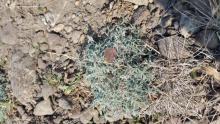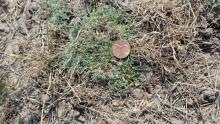Forums:
i was out doing some seed collecting last week and revisited a population of the nicest form of Lupine i have found. This plant seems to occur in a small area of the Owyhee uplands in Idaho. At first glance it looks like a caespitose Draba from a distance but closer inspection reveals that it is in fact a lupine. These plants have not quite flower yet so i will have to wait several weeks to get seed. Here are a couple of pictures.





Comments
Lori S. (not verified)
Wow, what a little gem! Any
Sun, 08/30/2015 - 10:46amWow, what a little gem! Any idea as to the species? It sure is a late-bloomer... plants waiting that long to bloom here would not likely have time to set seed!
Richard T. Rodich
Waht a good eye to spot such
Sun, 08/30/2015 - 7:29pmWaht a good eye to spot such tiny wee wonderful things!
There always seems to be something new every time we go walking, doesn't there!
Hatchett (not verified)
I must say, i have no idea
Mon, 08/31/2015 - 8:11amI must say, i have no idea what this is. It is not Lupinus uncialis which is an annual Lupine. I have tried to key it out but that goes nowhere. I talked to the BLM Botanist a few years ago but she did not know either. i will go out in a couple of weeks and collect some seed, the flowers are the Usual white and blue.
Margaret Young
I do like this little lupines
Sun, 09/13/2015 - 4:55amI do like this little lupines and posted a link to this thread in the Scottish Rock Garden Club Forum, where we have also been discussing lupines. A Californian member, who has visited the area in Idaho in the past, wrote this speculative post :